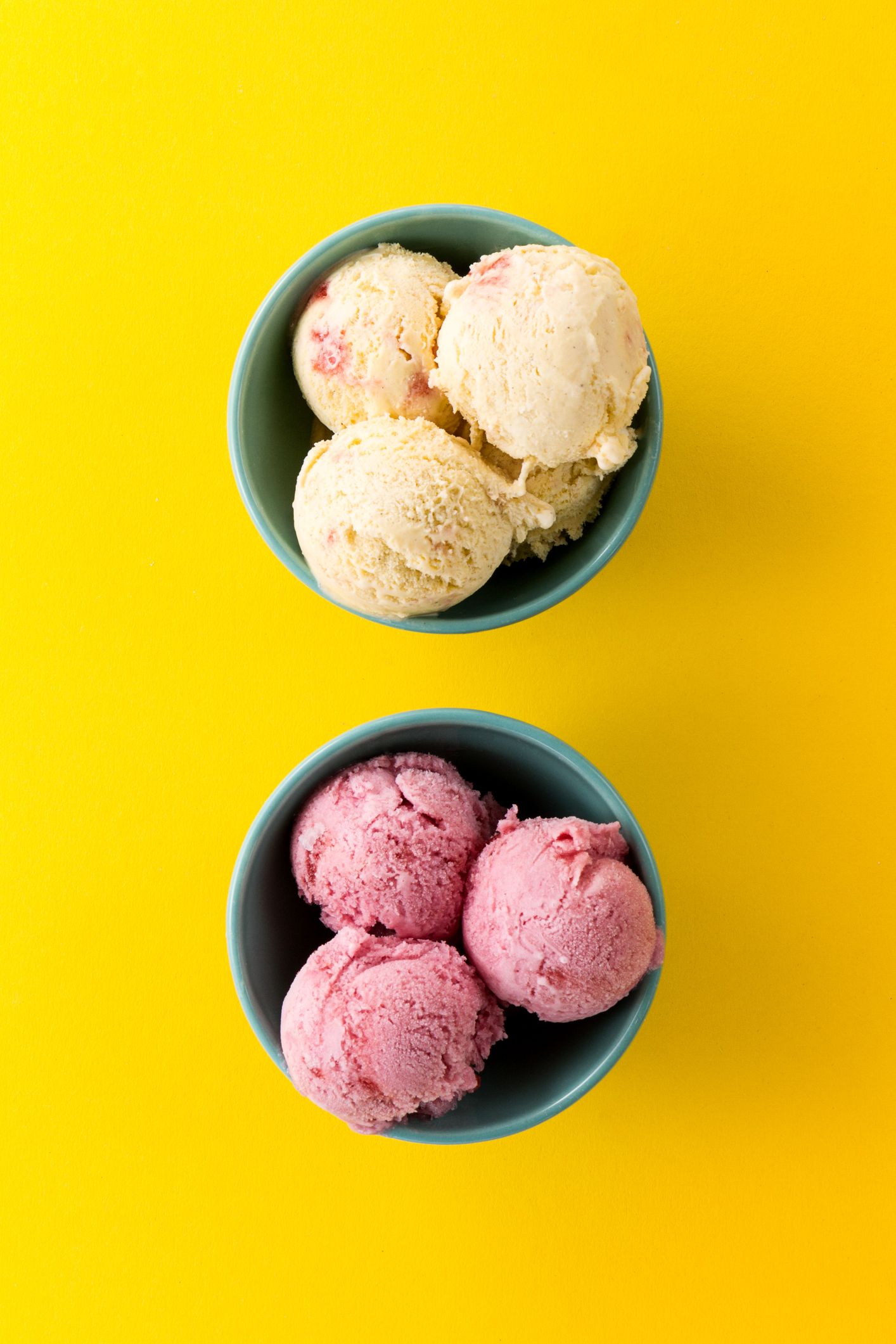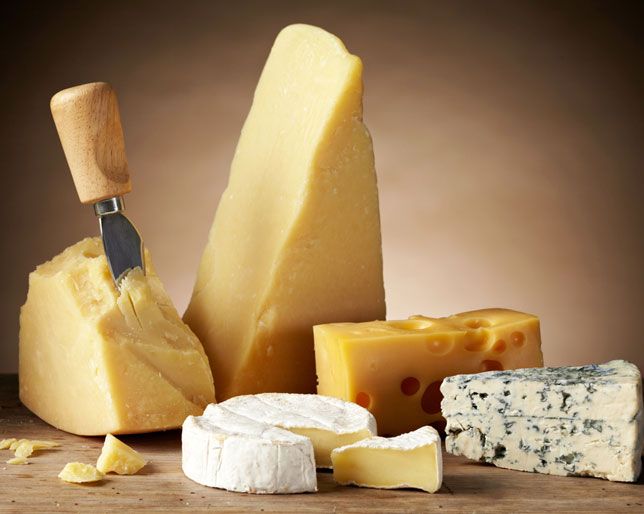Let's Clear This Up: Should You Steer Clear Of Dairy If You're On Keto?
Even if you’re not Keeping Up With Keto Diet (get it?), odds are by now—especially given the food fad’s undying popularity and all—you know some of the basics about the high-fat, moderate-protein eating plan.
So from the outside looking in, it might seem like the keto diet’s essentially a free pass to eat all the butter, cheese, and heavy cream your heart desires. But before all you dairy devotees out there jump on the trend train, a little FYI: Keto is not entirely an ice cream-filled dream.
So, can you have dairy on the keto diet?
Yes and no. It’s a little complicated like, you know, everything in life these days.
Some dairy products are actually great sources of protein, fat, potassium, and calcium and make a lot of sense for keto. But the keto diet’s actually a bit more restrictive when it comes to other dairy foods—and that’s due mostly to one thing: dairy equals sugar, which equals carbs.
“Dairy products actually have sugar in them,” says Scott Keatley, RD, of Keatley Medical Nutrition Therapy. The sugar Keatley’s talking about comes in the form of lactose; that lactose then breaks down into glucose, which is the sugar your body uses to push you out of ketosis, explains Keatley. “So, you can’t go hog wild on dairy.”
But a quick look at the nutrition facts can help you determine which dairy products might be a do and a don’t. For instance, higher-carb dairy products like ice cream and flavored milk will have a higher sugar content compared to something like a cheese or plain milk, explains Hillary Pride, RDN, LD, NASM-CPT, registered dietitian and certified personal trainer in Portland, Maine.
So which dairy foods don’t work on a keto diet?
“It really comes down to look out for added sugar,” Pride says. “Some sweetened yogurts can pack close to 40 grams of carbs per serving, so they may have to be enjoyed in smaller portions or swapped for a lower-carb alternative.”
When it comes to cheese, Pride encourages you to “be choosy.” For an option that’s lower in carbs, go for those that have been aged for longer, such as a sharp New England cheddar, which can have less than 1 grams per serving vs. a soft part-skim ricotta with about 6 grams of carbs in half a cup serving, she explains.
So, to make navigating the dairy aisle easier, remember these dairy no-no’s on keto:
- Ice cream
- Flavored milks
- Sweetened yogurts
- Soft cheeses
Okay, but what if you don’t eat dairy—can you do keto without dairy?
Absolutely, Pride says. You just need to know which swaps are smart swaps—like unsweetened almond milk for regular ole dairy milk and plant-based yogurts for usual dairy yogurt. That being said, however, “you still want to be sure you’re looking for unsweetened or no sugar added options to make sure the products fit your needs,” Pride explains.
Equally as important? Making up for any lost nutrients (calcium, protein, potassium) that you might’ve previously been getting by your yogurt, dairy, and cheese consumptions. For calcium, Pride says to consider sardines, tofu, kale, and fortified almond milk and for potassium, avocados, spinach, salmon, and edamame. And let’s not forget about keto’s big player: fats. To keep up with those sans-dairy products, go for nuts, avocados, seeds, and plant-based oils.

Now, not to be repetitive or anything, but just to make sure it’s clear: You don’t need to ditch dairy entirely if you want to do keto. In fact, there are plenty of dairy options that will fit in with your 50-grams-of-carbs-a-day (or fewer!) lifestyle, says Pegah Jalali, RD, a nutritionist with Middleberg Nutrition.
“All foods are basically allowed on the ketogenic diet, it is a matter of the portion,” she says, adding that that means you might have more wiggle room with certain dairy products, like butter and heavy cream, but not so much with others, like milk or ice cream.
These are the best dairy options for keto dieters:
1. Butter
Butter is an ideal source of fat on the keto diet, says Tammy Lakatos Shames, RDN, of Nutrition Twins. That’s because it has zero carbs and about 11 grams of fat per tablespoon, she says.
If you’re set on incorporating butter into your keto lifestyle (and honestly why wouldn’t you be?), Jalali recommends buying high-quality grass-fed butter, which is higher in omega-3 fatty acids—an essential, healthy fat for your body and brain.
2. Hard cheeses
Cheese gets the green light on the keto diet. But if you’re worried about your lactose intake, then Keatley says you’ll want to go for harder cheeses like Parmesan (one tablespoon of the stuff has less than a gram of carbs, according to the USDA), says Lyssie Lakatos, RDN, of the Nutrition Twins, who explains that they typically have fewer carbs than soft cheese.

Semi-hard cheeses—like Swiss, which has less than two grams of carbs per cup of shredded cheese, per the UDSA—are keto-friendly too, she adds. Take a cue from Jenna Jameson and melt some semi-hard cheese over some eggs for breakfast (or honestly, whenever).
3. Soft cheeses
While, yes, hard (and semi-hard) cheeses do have fewer carbs than soft cheese, that doesn’t mean all soft cheeses are off the table.
Brie cheese, for example, has less than one gram of carbs per ounce, per the USDA. Mascarpone and creme fraiche are good options too, says Lakatos, since they give you tons of added flavor and creaminess for very few carbs.
4. Whipping cream
Here’s the thing: Milk isn’t a great option on the keto diet, says Jalali. Whole milk has 12 grams of carbs per cup, and low-fat or skim has even more. And don’t even get me started on ice cream (way too much sugar).
Cream, on the other hand—whipping or whipped—is totally doable on the keto diet. “This is a high-fat, low- to no-carb food, so it can be enjoyed on the keto diet,” she says.

One thing to keep in mind: If it’s whipped cream you’re after (and not whipping cream, to add to your coffee), it might be best to, uh, whip it up yourself (one cup of the whipped stuff has under four grams of carbs and just over 43 grams of fat), since most store-bought versions have added sugar. To do that, all you need is heavy whipping cream, a hand mixer and a mixing bowl, and you whisk until the cream becomes fluffy. Add a pinch of pure vanilla extract for some flavor.
5. Cream cheese
Cream cheese is another keto-friendly food…as long as you don’t spread it all over a bagel.
But, at just one gram of carbs per ounce, per the USDA, you can absolutely enjoy a bit spread on celery stalks or halved strawberries, says Jalali—or, if you’re feeling creative, you can add it to any sauce to make it a bit creamier (and fattier).
6. Cottage cheese, sour cream, and Greek yogurt
All three of the dairy products are grouped together because they have similar carb content—about 11 grams of carbs per cup, per the USDA. So, these are doable, as long as you keep your carb content in check, says Lakatos (so, maybe have half a cup with keto-friendly berries instead of a full cup).
There is, however, one hack that many keto dieters use: “A common keto hack for yogurt is to make keto yogurt by mixing one part tangy sour cream—Wallaby Organic European Cultured is my fave—with one part heavy cream,” says Jalali. “This combination will have less carbs and higher in fat than traditional yogurt.”
Source: Read Full Article


